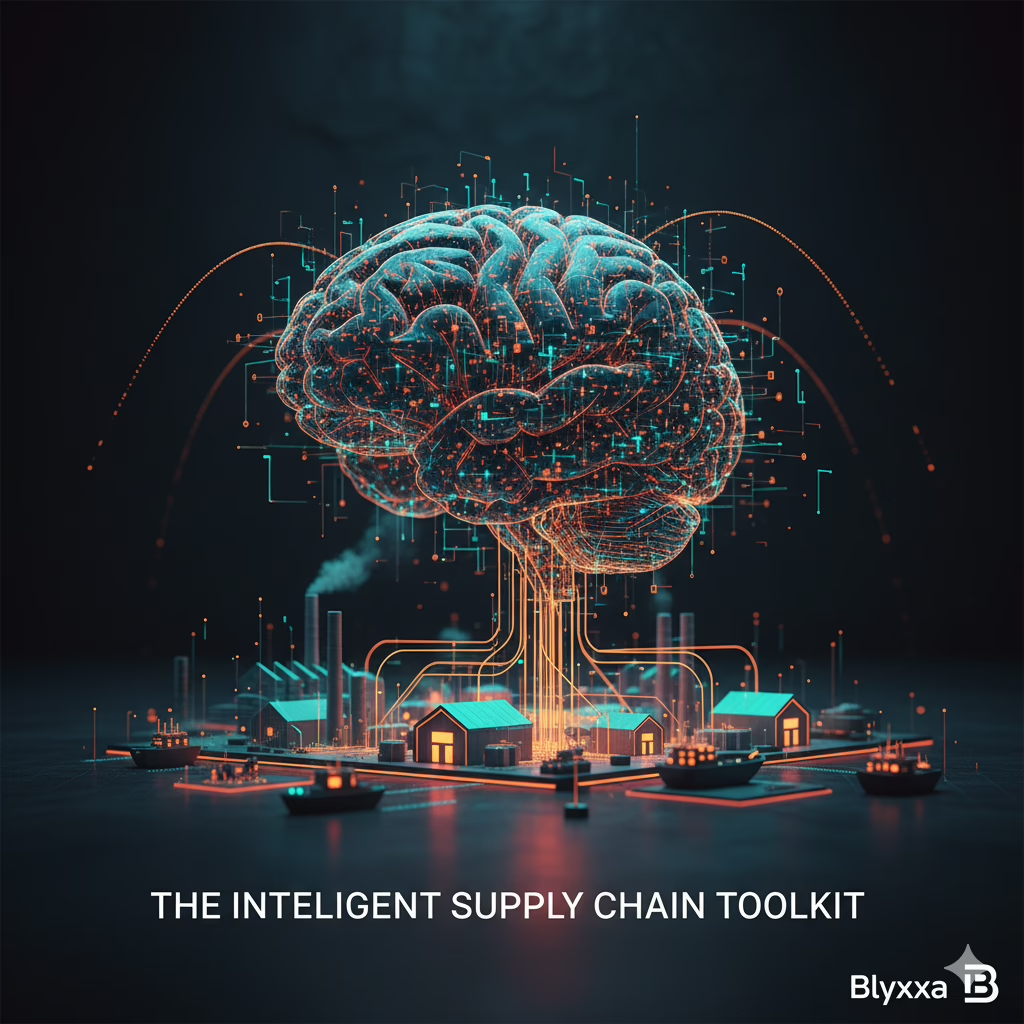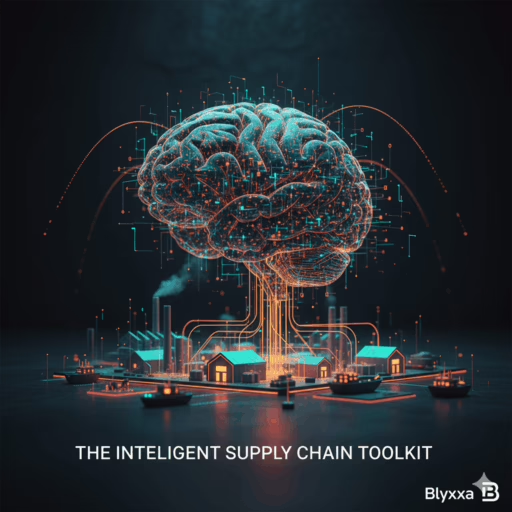Table of Contents
A global pandemic, an unforeseen geopolitical crisis, or a sudden demand shock… the modern business world has become an arena where unpredictability is the new normal. Surviving and thriving in this arena requires much more than just a good product or a brilliant marketing strategy. The real key to success is hidden in a system that is often overlooked but is the very heart of a company: your supply chain.
So, how prepared is your supply chain for this chaos?
If you’re still trying to predict tomorrow by looking at spreadsheets full of yesterday’s data, scrambling with reactive solutions after a crisis hits, then you’re not holding an operational asset—you’re holding a ticking time bomb.
The traditional, linear, and reactive concept of a “chain” is dead. The future belongs to the intelligent supply chain—systems that understand, learn, predict, and adapt. In this article, we’ll explore how you can transform your operations from a fragile structure into an intelligent “brain” that will become your greatest competitive advantage.
The Problem: Why Traditional Supply Chains are Doomed to Fail
For years, operations managers have worked under the pressure to cut costs and increase efficiency. This “belt-tightening” approach has turned supply chains into extremely fragile structures, devoid of flexibility and resilience. The core problems of the traditional model are:
- Reactive Nature: The system is designed to act after a problem has occurred. When a port strike, a supplier bankruptcy, or a sudden demand spike happens, planning teams scramble desperately to minimize the damage. This means constantly operating in a “firefighting” mode, leaving no room for strategic thinking.
- Data Silos: Finance, marketing, logistics, and procurement departments often work with their own isolated data sets. Logistics is unaware of a major campaign planned by marketing; finance is not informed about a drop in a supplier’s production capacity. This disconnect makes it impossible to see the whole picture, leading to risks being unnoticed until the moment of crisis.
- Guesswork-Based Decisions: Even the most well-intentioned managers try to predict the future with spreadsheets based on limited and historical data. This is like driving your car looking only in the rearview mirror. You will never see the sharp turn ahead.
This old model causes you to lose capital, opportunities, and market share not just in major crises, but every single day through thousands of small, suboptimal decisions. That is the real danger.
The Solution: What is an Intelligent Supply Chain and How Does It Work?
An intelligent supply chain is a transformation from a mechanism that reacts to events to a living organism that foresees and shapes them. This is made possible through the strategic use of technology, especially Artificial Intelligence (AI). So, what is a predictive supply chain? It’s a system that uses data to predict future demand, potential risks, and operational bottlenecks with a high degree of accuracy.
This system is built on three fundamental pillars:
- Data Supremacy: First and foremost, you must have clean, reliable, and accessible data. This means breaking down data silos in different departments and creating a “single source of truth” that integrates all ERP, warehouse management systems, and even supplier data.
- The Predictive Engine: This is the brain of the system. AI and machine learning models analyze this unified data to uncover patterns and correlations invisible to the human eye. This engine predicts future demand by analyzing not just past sales but also market trends, social media sentiment, weather forecasts, and even geopolitical developments. For any C-Suite leader, this move towards intelligent systems is a core part of a wider corporate evolution, a journey detailed in The CEO’s Digital Transformation Playbook.
- The Adaptive Execution Layer: Intelligence is a hallucination unless it leads to action. This layer is the nervous system that connects the brain’s insights to the physical world. An intelligent demand forecast instantly optimizes inventory levels, updates logistics routes, and adjusts production plans. This is where the benefits of AI in logistics and operations become tangible.
Not Just Surviving, but Dominating: From Fragility to Antifragility
So, how to improve supply chain resilience? Most companies focus on building “resilient” systems that can “bend and bounce back” in a crisis. This is a strategy for survival. But it’s not enough for market leadership.
The goal is to build an “antifragile” system, a concept popularized by Nassim Nicholas Taleb. Antifragile systems not only withstand shocks, volatility, and chaos but actually benefit from them to become stronger. A moment of crisis becomes an opportunity for you to capture market share while your fragile competitors crumble. Effective supply chain risk management strategies often involve a higher degree of smart automation, a concept thoroughly explored in the AI-Powered Business Automation Playbook
The Future Starts Now: Your Path to Operational Excellence
The future of supply chain technology is autonomous systems. Self-governing, self-healing operations that require minimal human intervention are no longer science fiction. In this new era, the role of leaders is also changing. You will no longer be “operators” micromanaging daily operations, but “orchestrators” who design these intelligent systems, set strategic goals, and conduct them like a symphony.
This transformation shouldn’t intimidate you. It’s a strategic journey, not an overnight switch. The first thing you need to embark on this journey is a mindset that will break old paradigms and a correct roadmap. You need a comprehensive plan designed to rewrite your company’s operational DNA and prepare it for the future.
Remember, the competitive advantage of the 21st century is won not by being the biggest or the oldest, but by being the fastest and the smartest. Your supply chain is your most critical asset that will either carry you to victory in this race or leave you behind. It’s time to stop seeing it as a burden and start turning it into your most powerful weapon.






